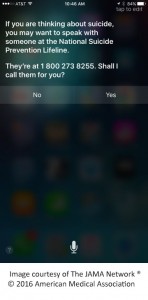EMBARGOED FOR RELEASE: 11 A.M. (ET), MONDAY, MARCH 21, 2016
Media Advisory: To contact corresponding study author Dima M. Qato, Pharm.D., M.P.H., Ph.D., call Sam Hostettler at 312-355-2522 or email samhos@uic.edu. To contact commentary author Michael A. Steinman, M.D., call Scott Maier at 415-476-3595 or email scott.maier@ucsf.edu. To contact research letter corresponding author Judy Jou, M.A., call Erin McHenry at 612-624-2449 or email emchenry@umn.edu.
Related content: Please see this previously published article in JAMA.
To place an electronic embedded link in your story: Links will be live at the embargo time:
https://archinte.jamanetwork.com/article.aspx?doi=10.1001/jamainternmed.2015.8581; https://archinte.jamanetwork.com/article.aspx?doi=10.1001/jamainternmed.2015.8597; https://archinte.jamanetwork.com/article.aspx?doi=10.1001/jamainternmed.2015.8593
JAMA Internal Medicine
More older adults used multiple medications and dietary supplements, and taking them together put more people at increased risk for a major drug interaction, according to a new study published online by JAMA Internal Medicine.
Most older adults in the United States use prescription and over-the-counter medications and dietary supplements. There is increased risk among older adults for adverse drug events and polypharmacy.
Dima M. Qato, Pharm. D., M.P.H., Ph.D., of the University of Illinois at Chicago, and coauthors analyzed nationally representative data to examine changes in medication use, which included concurrent use of prescription and over-the counter medications and dietary supplements, to gauge potential for major drug interactions.
The study group included 2,351 participants in 2005-2006 and 2,206 in 2010-2011 who were between the ages of 62 and 85. In-home interviews and direct medication inspection were performed.
The authors report:
- Concurrent use of at least five prescription medications increased from 30.6 percent to 35.8 percent over the study period.
- Concurrent use of five or more medications or supplements of any type increased from 53.4 percent to 67.1 percent.
- Use of over-the-counter medications declined from 44.4 percent to 37.9 percent.
- Dietary supplement use increased from 51.8 percent to 63.7 percent. Multivitamin or mineral supplements and calcium were the most commonly used supplements during the study period.
- About 15.1 percent of older adults in 2010-2011 were at risk for a major drug interaction compared with an estimated 8.4 percent in 2005-2006. For example, preventive cardiovascular medications and supplements were increasingly used together in interacting drug regimens.
The authors note study limitations. For example, their study data were not designed to evaluate the broad range of factors that can influence adverse drug events, such as liver and kidney function, type of interaction, dosage, timing of concurrent use and disease severity
“These findings suggest that the unsafe use of multiple medications among older adults is a growing public health problem. Therefore, health care professionals should carefully consider the adverse effects of commonly used prescription and nonprescription medication combinations when treating older adults and counsel patients about these risks,” the authors conclude.
(JAMA Intern Med. Published online March 21, 2016. doi:10.1001/jamainternmed.2015.8581. Available pre-embargo to the media at https://media.jamanetwork.com.)
Editor’s Note: The article contains conflict of interest and funding/support disclosure. Please see the article for additional information, including other authors, author contributions and affiliations, financial disclosures, funding and support, etc.
Commentary: Polypharmacy – Time to get Beyond Numbers
“It is time to take the next leap forward. We need to create systems that support an ongoing process of monitoring medications. Such systems would help us periodically assess the benefits, harms and ongoing need for each of a patient’s medications, as well as the reasonableness of the medication regimen as a whole. These systems could also help physicians with deprescribing, for example by supporting gradual down-titration of a medication and monitoring patients for adverse drug withdrawal reactions after a drug is stopped. This is hard. Many attempts to improve these elements of prescribing quality have had disappointing results. Yet, it is within our grasp. Past experience suggests that several elements may be particularly helpful,” writes Michael A. Steinman, M.D., of the University of California, San Francisco, in a related commentary.
(JAMA Intern Med. Published online March 21, 2016. doi:10.1001/jamainternmed.2015.8597. Available pre-embargo to the media at https://media.jamanetwork.com.)
Editor’s Note: The article includes conflict of interest and funding/support disclosures. Please see the article for additional information, including other authors, author contributions and affiliations, financial disclosures, funding and support, etc.
Research Letter: Do Patients Disclose Complementary/Alternative Medicine Use?
Many patients do not disclose to primary care physicians their use of complementary and alternative medicine (CAM), according to an article published online by JAMA Internal Medicine.
Primary care physicians often don’t initiate conversations with patients about their use of CAM and patients have had concerns about discussing CAM with their physicians for fear of disapproval. These communication barriers may prevent CAM from being integrated into patient treatment and self-care routines.
Judy Juo, M.A., and Pamela Jo Johnson, M.P.H., Ph.D., of the University of Minnesota, Minneapolis, analyzed survey data for 7,493 adults. Of the adults, 3,094 (42.3 percent) did not disclose their most used form of CAM, according to the results reported in the research letter.
Nondisclosure was most common among adults who did yoga, tai chi or qi gong and among those who practiced meditation or mindfulness. Adults who used herbs or supplements and who had acupuncture disclosed the most, results show.
When adults did not disclose CAM to their physicians, it was most often due to physicians not asking about it or patients believing their physicians didn’t need to know about their CAM use, according to the results.
“Contrary to earlier findings, our results attribute most nondisclosure to physicians not asking about CAM use or to concerns about physician knowledge regarding CAM rather than to physician discouragement or negativity about the use of CAM. Consequently, physicians should consider more actively inquiring about patients’ use of CAM, especially for modalities likely to be medically relevant,” the authors conclude.
(JAMA Intern Med. Published online March 21, 2016. doi:10.1001/jamainternmed.2015.8593. Available pre-embargo to the media at https://media.jamanetwork.com.)
Editor’s Note: The article includes funding/support disclosures. Please see the article for additional information, including other authors, author contributions and affiliations, financial disclosures, funding and support, etc.
# # #
For more information, contact JAMA Network Media Relations at 312-464-JAMA (5262) or email mediarelations@jamanetwork.org.



